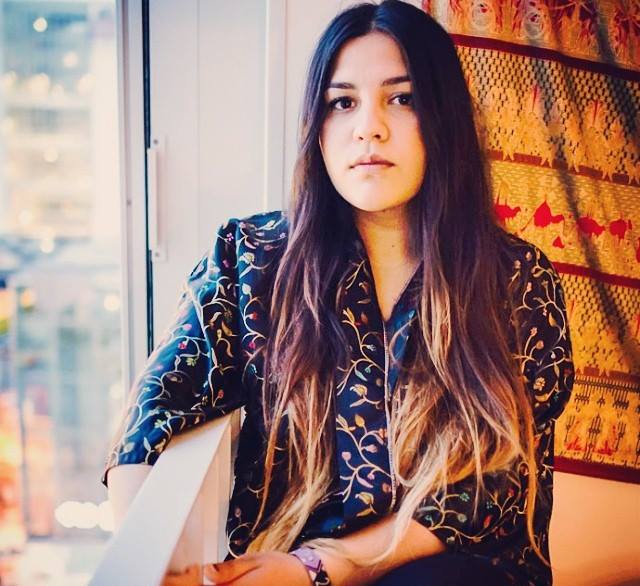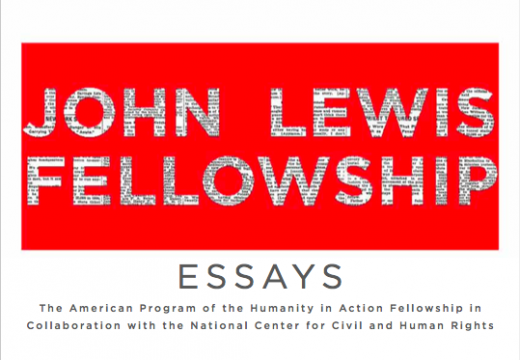Details
Article
Having been able to discuss, debate and collaborate with twenty-seven bright, intelligent and driven people of diverse backgrounds has been a restorative experience for me.
I struggle in finding words that could encompass one of the most moving, thrilling, exciting beautiful, but also challenging and difficult experiences I have been allowed to possess. I feel honored and privileged for taking part in the John Lewis Fellowship of 2017. The main theme of the fellowship was restorative justice and as an Afghan – and Muslim woman who lives in The Netherlands, having been able to discuss, debate and collaborate with twenty-seven bright, intelligent and driven people of diverse backgrounds has been a restorative experience for me. It has not only been restorative, but a transformative experience as well. Having learned about the way in which people can change the judicial system has made me consider going to Law School after having pursued my studies in Cultural Anthropology.
Coming to Atlanta has added color to my definition of segregation and the way in which it systematically works in the United States. As a European fellow – I have never experienced the categorization of black and white in such a static way and what I mean by that is its constitutional roots. The way in which the categorization of black operates in a Dutch context, usually refers to a predominantly colored environment, rather than solely black. I would, however argue that the color-blind discourse that fluctuates within the United States context is comparable to the Dutch color-blind discourse – both societies blatantly deny the existence of racism. Racism is present in both societies, but hard to dismantle due to the color-blind approach that has put a cloak on racism. The danger of color-blindness, however, is its denial of oppression along the axes of race, ethnicity and in some cases religion. Dr. Carole Anderson has been a great inspiration, but more importantly a support in helping us dissect racism in The United States and providing us with strategies to continue to dissect and dismantle oppression. Within a European context the terms white privilege, white supremacy and whiteness are concepts that are hardly discussed outside of classes focussing on critical race theory. In the United States, this vocabulary seems more ingrained in the language, something I wish was more present in Europe.
I don’t believe in that all the harm done could ever be restored.
The idea I have struggled most with is America’s settler colonialist history – they have colonized a land that was not theirs to take, but continue inhabiting it. This settler colonialist history has been forgotten and highly under illuminated. Settler colonialism has been discussed by Dr. Natsu Saito, a professor who has challenged my conception of international law, by confronting me with the construction and origin of the ‘‘Western world’’. Dr. Saito posed the question: ‘‘Who is a sufficiently ‘‘civilized’’ state in deciding who was part of the Western world?’’ This idea has confronted me with the fact that international law does not only serve to protect, but can also be used as a tool to oppress. She has challenged us in thinking about restorative justice of the indigenous population by confronting us with the non-existent concept of property within Native American communities. A fact that has highlighted the limitations of Western solution-driven thinking in a Restorative Justice context. This leads me to another struggle in thinking about Restorative Justice: who do you hold accountable?
To help me visualize a restorative justice approach, I drew an analogy between humanity and a broken vase.
Ultimately, I don’t believe in that all the harm done could ever be restored. I do however believe in Restorative Justice as an aspirational approach in empowering marginalized and oppressed communities, an approach that has been brought forward by Dr. Judith Goldstein during our fellowship. Restorative Justice will remain to be a complex concept for me to grasp, but as a tool to help me visualize a restorative justice approach, I drew an analogy between humanity and a broken vase. When you break a vase and glue it together, you can still see the traces of where it was broken. When you buy a new one, you diminish the harm that was done and enter a space of cultural – and historical amnesia.
Restoring the vase urges you to carefully analyze the broken pieces and acknowledging the fact that all that was broken cannot be fixed, because the glass splinters will be invisible for

the human eye. When glass breaks, you can glue it together, but it will never be the same vase as it was before, the vase will carry visible and invisible scars. There is a Japanese art form called Kintsugi, in which they fix broken ceramics by gluing it together with silver, platinum or gold. Adding more value to what was broken, without undermining or forgetting about the history of the formerly broken ceramic piece. I think this idea could be further explored in thinking about contemporary forms of Restorative Justice, even though oppression is part of someone’s identity, it should not have the authority to define it.
I cannot end this reflection without praising Dr. Roselyn Pope a true (s)hero, who will continue to inspire me throughout my life, who had the courage to not ask, but demand rights that were hers.
During the Stand-Up meeting, a meeting where citizens of Atlanta came together and brainstormed about questions they had for the elected candidates of the City Council of Atlanta. I met an admirable woman, who might not have been a well-known figure in the Civil Rights Movement, but her words will always stick with me and I will always remember her face if I ever feel discouraged: ‘‘My knees are hurting from all the marches I have attended.’’ Her name is Geri Chatmon and she continues to fight for rights, that are unfortunately very similar to the rights she was demanding during the Civil Rights Movement. I cannot end this reflection without praising Dr. Roselyn Pope a true (s)hero, who will continue to inspire me throughout my life, who had the courage to not ask, but demand rights that were hers.

I want to end this reflection with a poem I have written called chains. And a piece of art called: ‘‘The Road to Hope’’ by Fatih Hassan, exhibited by the Clark University Art Gallery. A piece a part that has touched me and has continued to stay with me during the fellowship. This piece of art embodies the beauty and the ugliness of a road of mobility and progress while touching upon contemporary issues in a confronting manner.
Chains
Chains …
Clenched, wrenched and tight around our bodies
Visible, invisible or deeply rooted within our souls
Like entrenched and ineradicable marks
Disciplined onto our physique with whips
That enforce cultural and historical amnesia
Oh how they have a grip on us,
But we will not submit.
Chains …
Dangle from the streets of Atlanta as I pass
From North to South
From Wealthy to Poor
From Gentrification to Gentrified
From Privileged to Oppressed
From White to Black
Chains …
Hide behind prison walls
Where a quarter of the US-population resides
Where physical chains make place for symbolic ones
In case a prisoner gets out
If they ever do
Why?
Because the neo-liberal system has allowed
For prisoners to become a profitable commodity and promote modern day slavery
And please don’t tell me that the system is broken
Because it is doing exactly what it should
Chains …
Have put a lock on history books
That present an inconvenient truth.
Jim Crow might have fallen
But the unequal and political dichotomies are very much alive
There is no place or space
In hegemonic discourse for the intersecting entities
That construct or define human identity
A burden:
People of Colour
People of the LGBT+ Community
People with different abilities
And all people who deviate from the status-quo
Unfortunately, need to carry
I suffocate while realizing that the American Dream:
‘‘Democracy, Rights, Liberty, Opportunity and Equality’’
Are merely a myth
But, actually one of most ugly, destructive and oppressive truths that are ever
At least to my knowledge, told
The borders of this country are drawn
With blood that was spilled by the extermination
Of ninety-eight percent of its indigenous population
The soil of this country has been fed by tears
Produced by culture, violence, trauma and death
I speak these words with a raged tongue
Still struggling in finding my place between nuance and anger
I have learned that at points I will be the bridge
Fluctuating between being educated or educating
In the process of educating, however
I have learned while borrowing from poet Rushin’s eloquent, but accurate words:
‘‘I’m sick of filling your gaps,
Sick of being your insurance against
The isolation of your self-imposed limitations.’’
So is there hope to this story
Or will justice never be served?
I might not know how these chains will dissolve
I might now know if they ever will
I do however, find strength in Lonni King’s words:
‘‘Our democracy does not run on cruise control’’
Democracy acquires people to participate
So, the only advice I can pass on is
Use the advantages you have
To participate in spaces and places within society
While trying to unlock the chains by resisting, voicing, claiming and demanding
Rights that are ours



